Working for the Milky Way
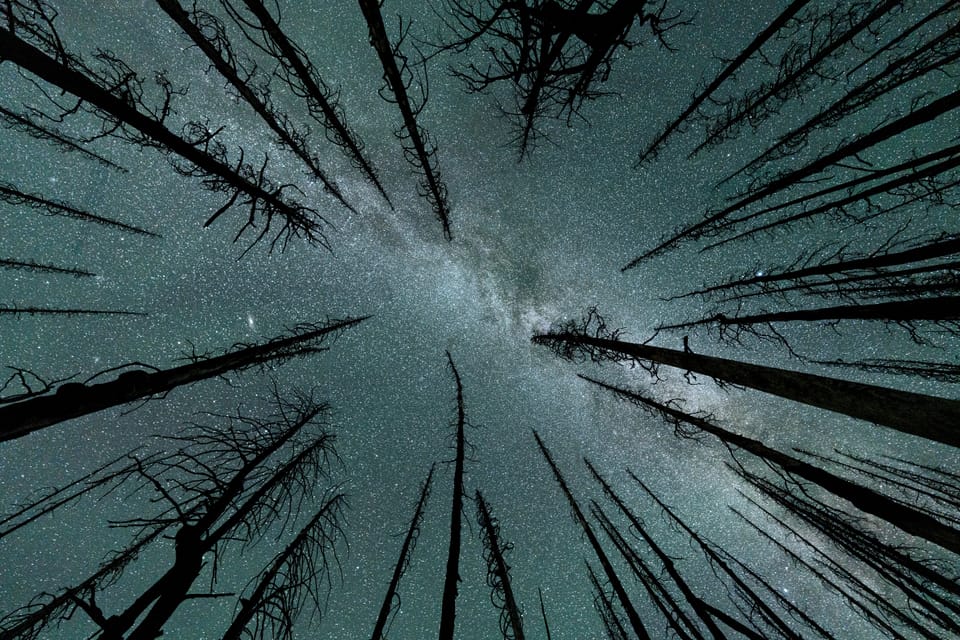
I won't be posting a traditional newsletter today because I'm wiped out from a brutal all-night hike to photograph the Milky Way.
Instead, I thought it might be fun to share a bit about last night's adventure because it says a lot about how I explore the world and tackle new experiences.

This adventure started over a month ago, when I began looking more closely at one of our prominent local peaks and wondering if it might be a suitable frame for a photograph of the Milky Way.
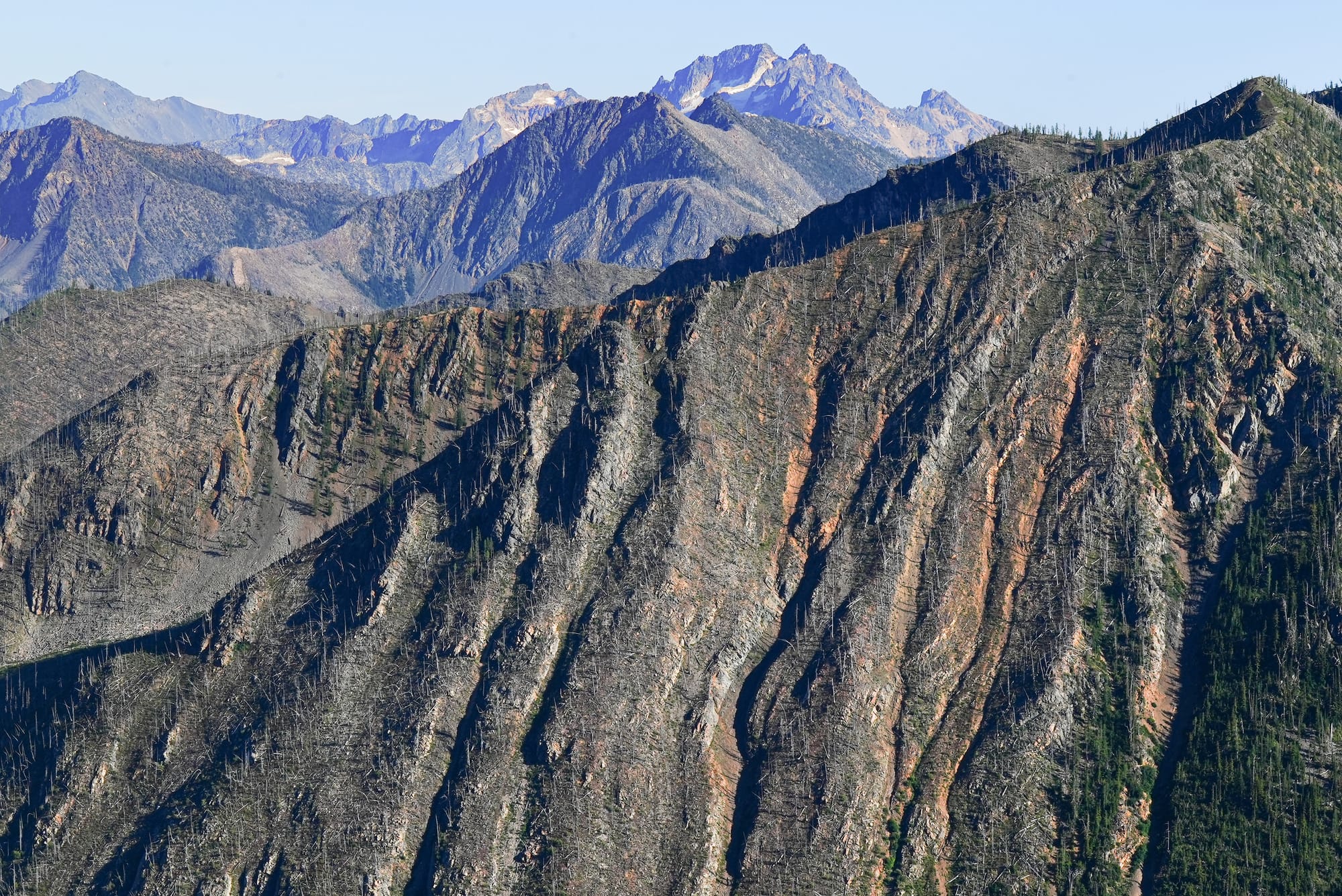
Taking a photograph of the Milky Way, however, means using a wide angle lens that creates a wide view but makes large and distant objects appear tiny. Therefore, taking a photograph of this peak and the Milky Way would require finding a remarkably close vantage point, which would be almost impossible in this trailless and extraordinarily rugged landscape.
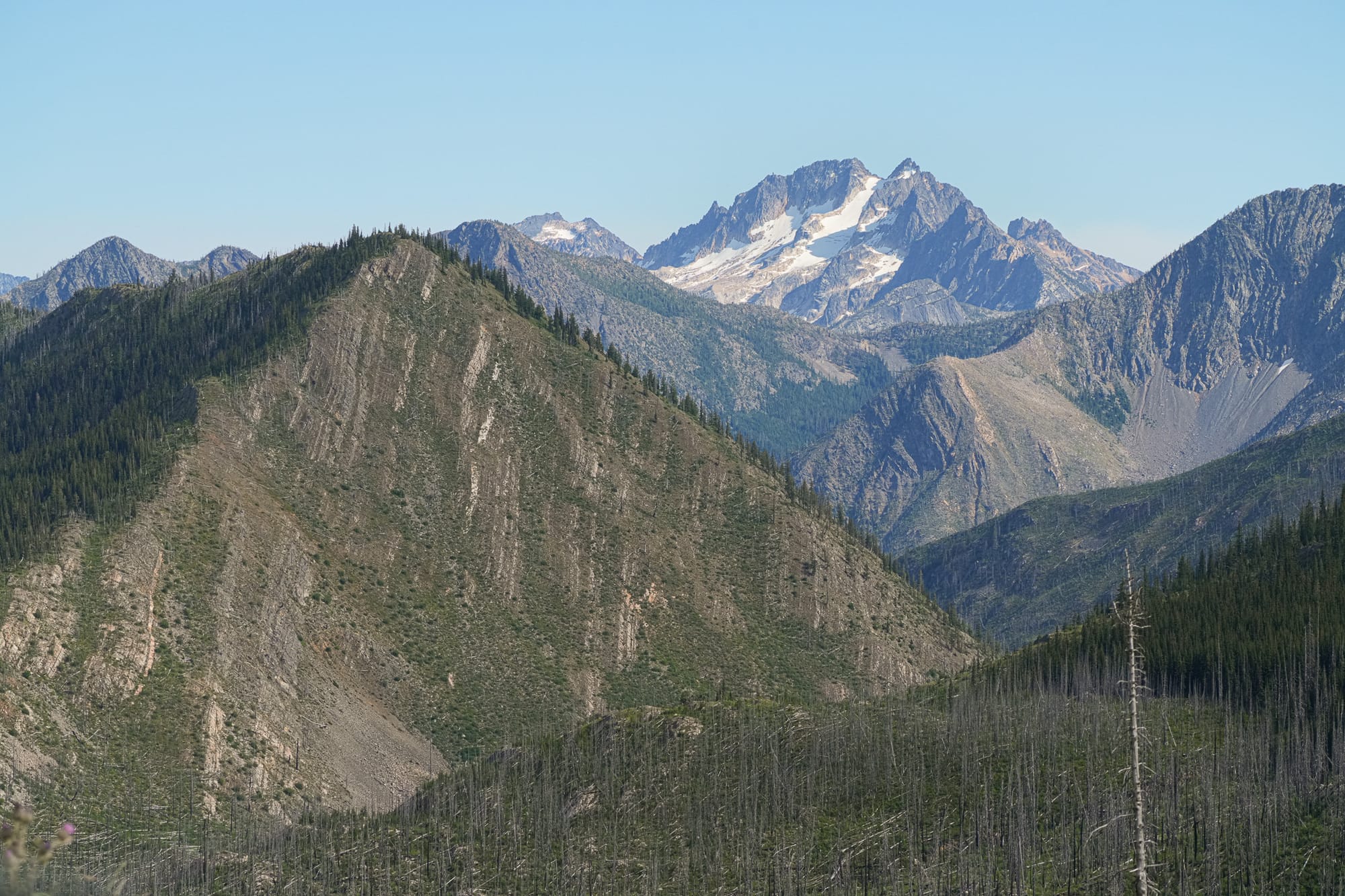
This inkling of an idea sparked me to spend weeks hiking to different viewpoints and poring over maps trying to visualize potential routes. I even asked a friend to fly around the mountain taking aerial photographs a couple times because I was worried about hiking to a remote viewpoint only to discover that the view of the mountain was blocked by another ridge or another peak I couldn't see from a distance.

The potential route I finally settled on would require climbing nearly 4000 feet in just over 1.5 miles, all of it through burned forest on an incredibly steep hillside covered in downed logs and rolling rocks.
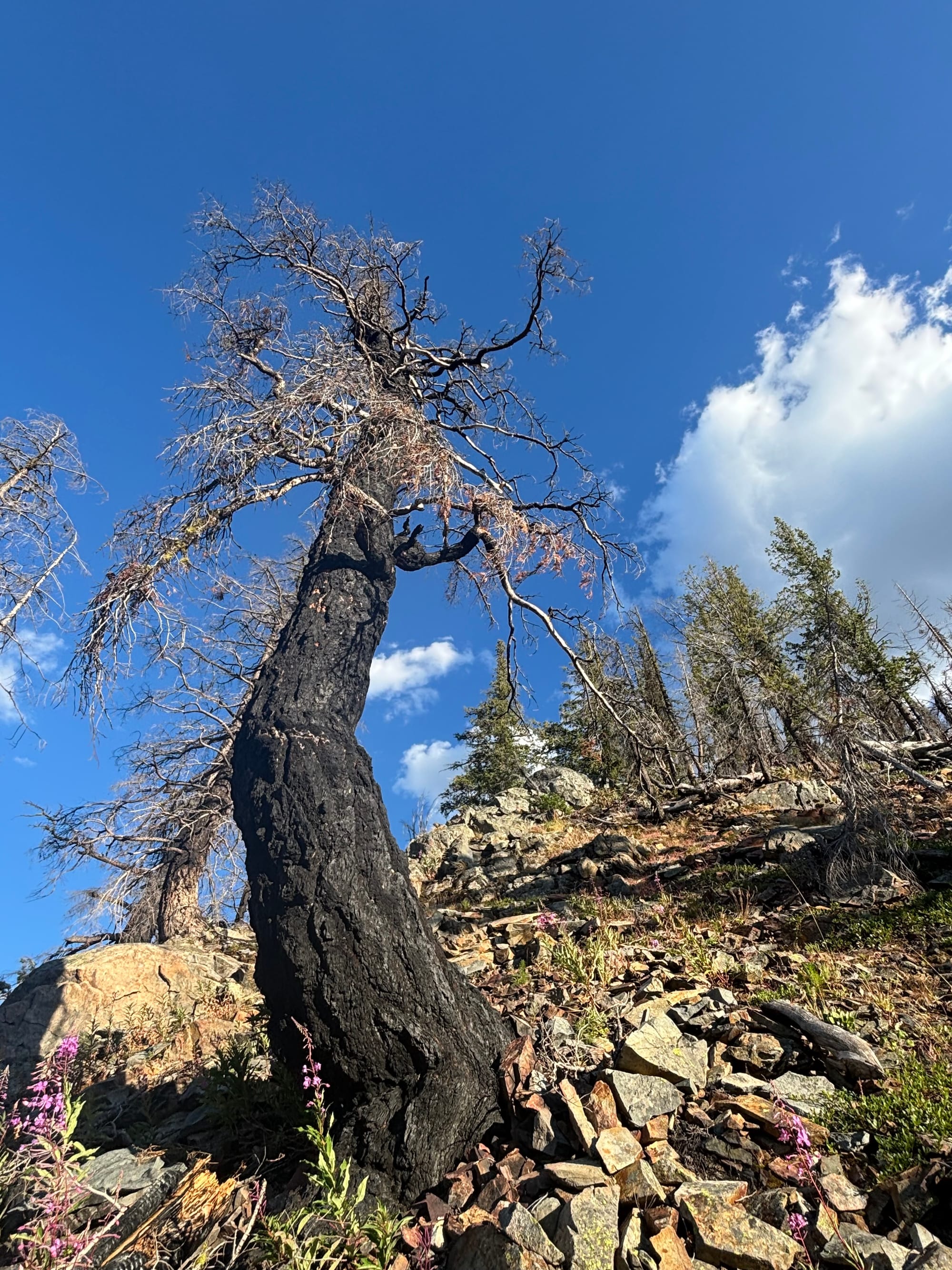
For obvious reasons, I was nervous and unsure about this adventure, so I was thrilled to learn that one of my hiking buddies was willing to try it out with me. We decided to first hike the route in the daytime, not only to see if it was even feasible, but to also check out the view before hauling up all the gear we'd need for an extended photography session.
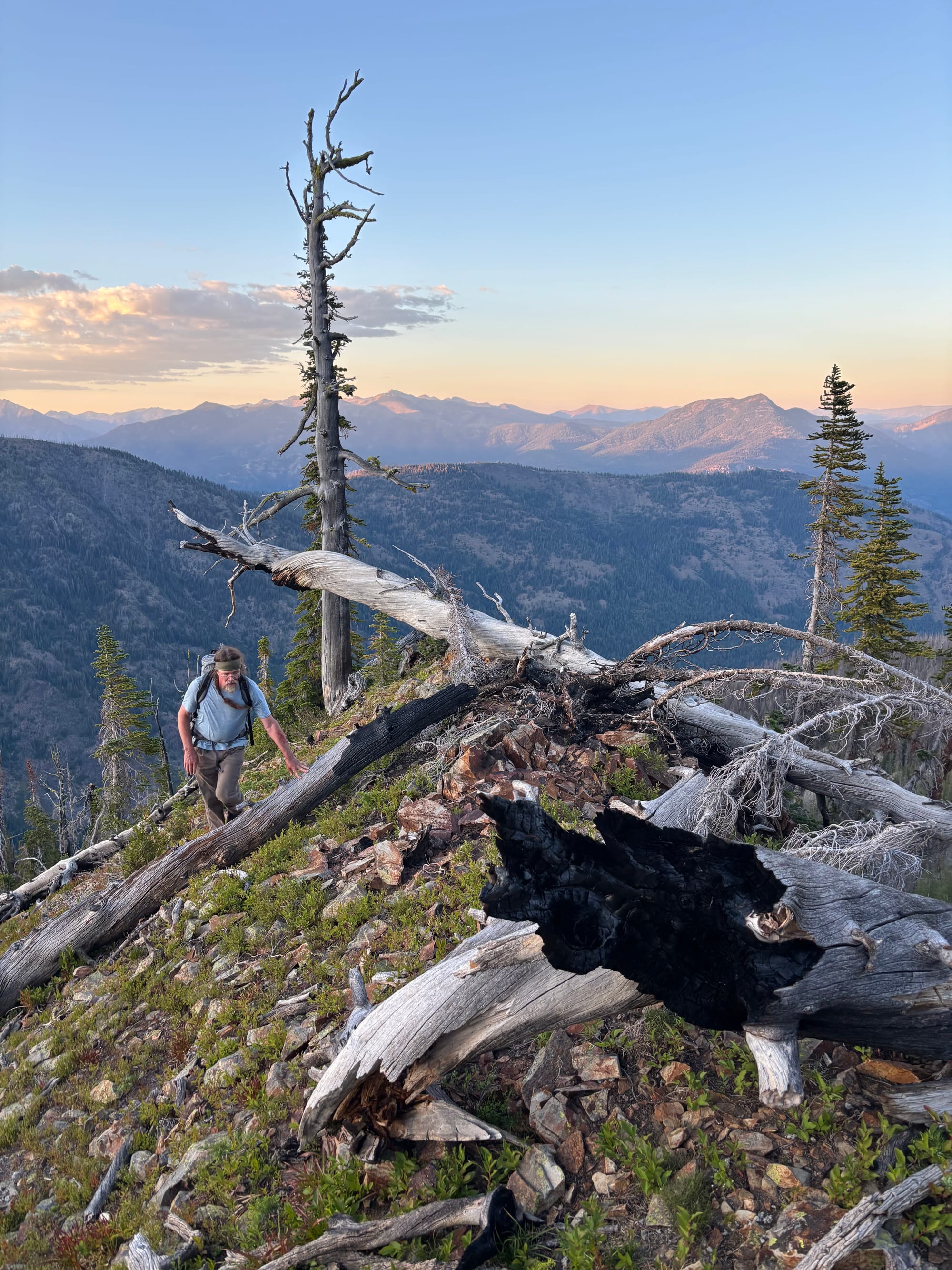
That first hike was successful, but the sheer scale of the effort was deeply humbling. The ascent required climbing long stretches of loose talus, knife edge ridges, and rocky ledges so steep that coming back down that way was not an option.

Fortunately, the viewpoint we finally reached was awesome, and exactly what we hoped to find,
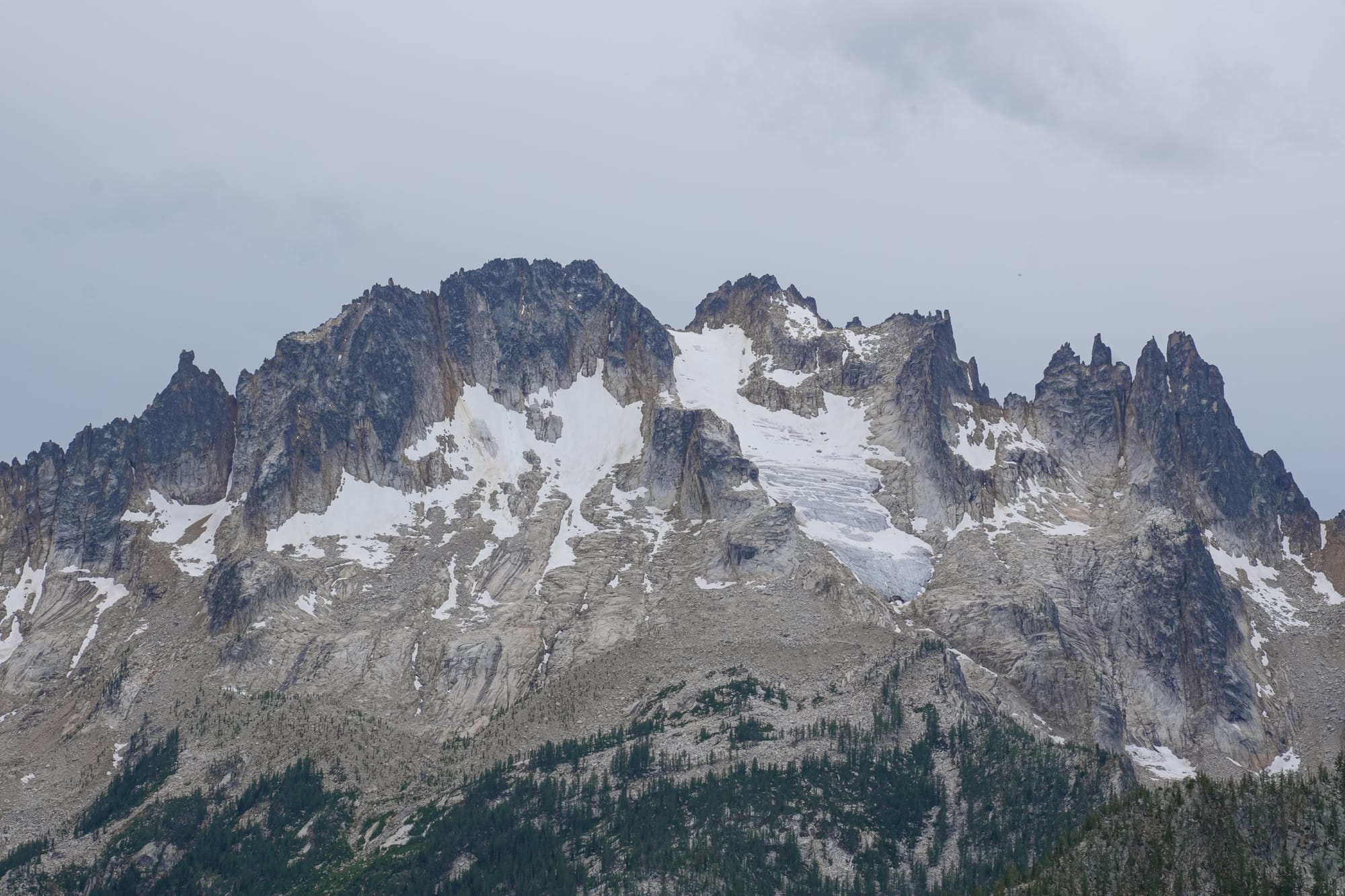
However, the necessity of descending by an alternate route soon sobered us up because the only other option forced us to side-step down an equally steep hillside for three hours through a maze of dead trees, logs, and waist-high vegetation.
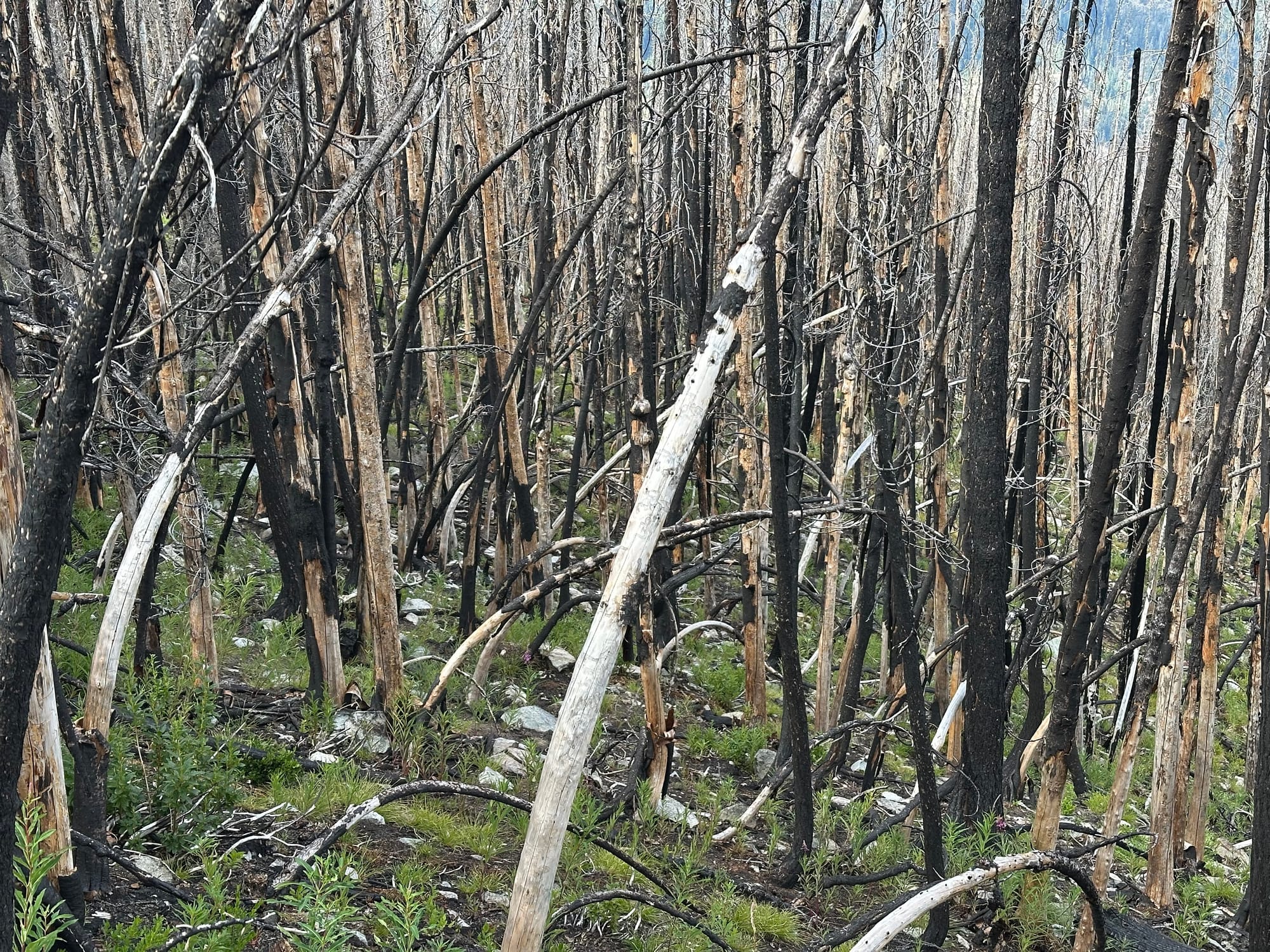
So, after taking a couple days to recover, we decided that it would be worth returning to hike this route again in the dark to photograph the Milky Way!
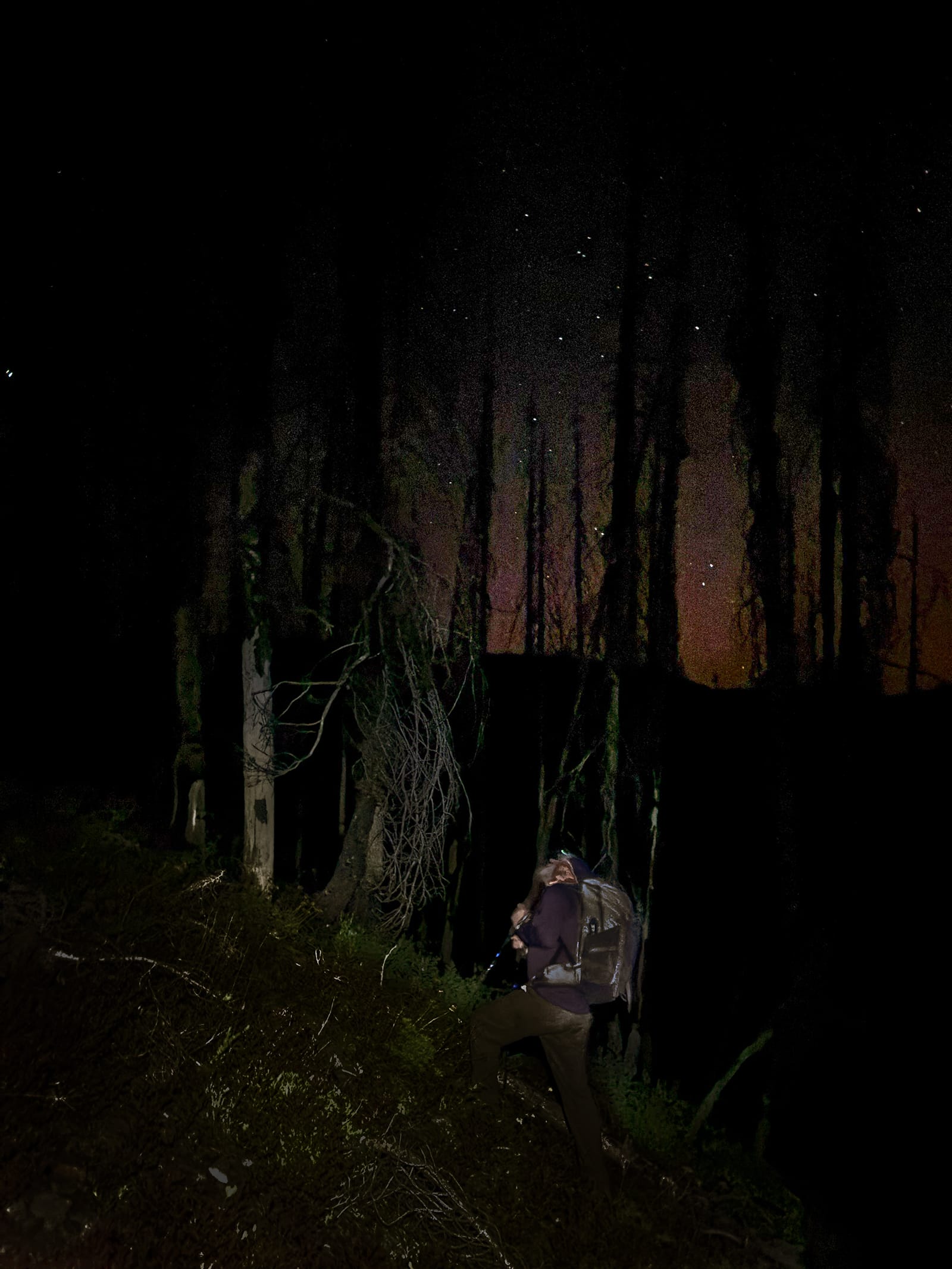
On the day of our return hike, we tried talking ourselves out of the undertaking multiple times, especially because the temperature was 95 degrees when we met up that afternoon. On top of everything else stuffed in my pack, I was carrying six liters of water and even that didn't seem like enough for the 13-hour outing we were attempting.

By now you might be asking what was the point of all this? I guess the best answer is that my passion is finding unique life experiences and insights that deepen my understanding of the natural world. These are the kinds of insights that I love to share because I want to bring joy, wonder, and fascination to people's lives, and seeing the Milky Way in its full splendor is something that many people rarely experience (including myself!).

There is something very special, almost sacred, about lying on your back, staring up at millions of twinkling stars and musing on the vast cosmos. I live in a Dark Sky community, where people work hard to protect the night sky, but even here the Milky Way doesn't shine through in all its glory. This truly is a rare and special experience.
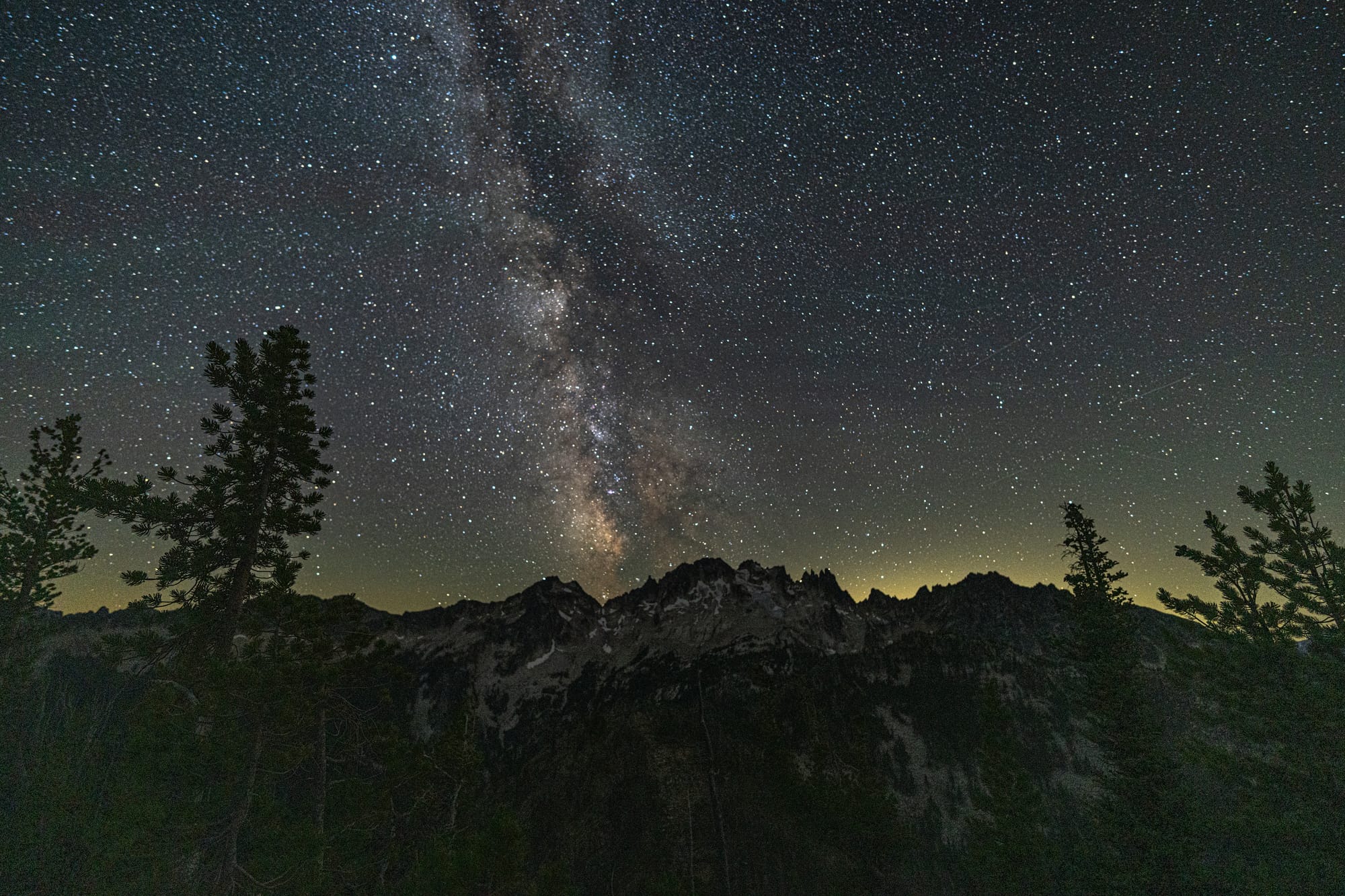
So, what was our reward for undertaking such a long and difficult hike: a full 360-degree view of the deep, black night with no lights, no people, and the nearest big city over 100 miles away. For me, that's more than enough justification for making an effort like this.

Member discussion